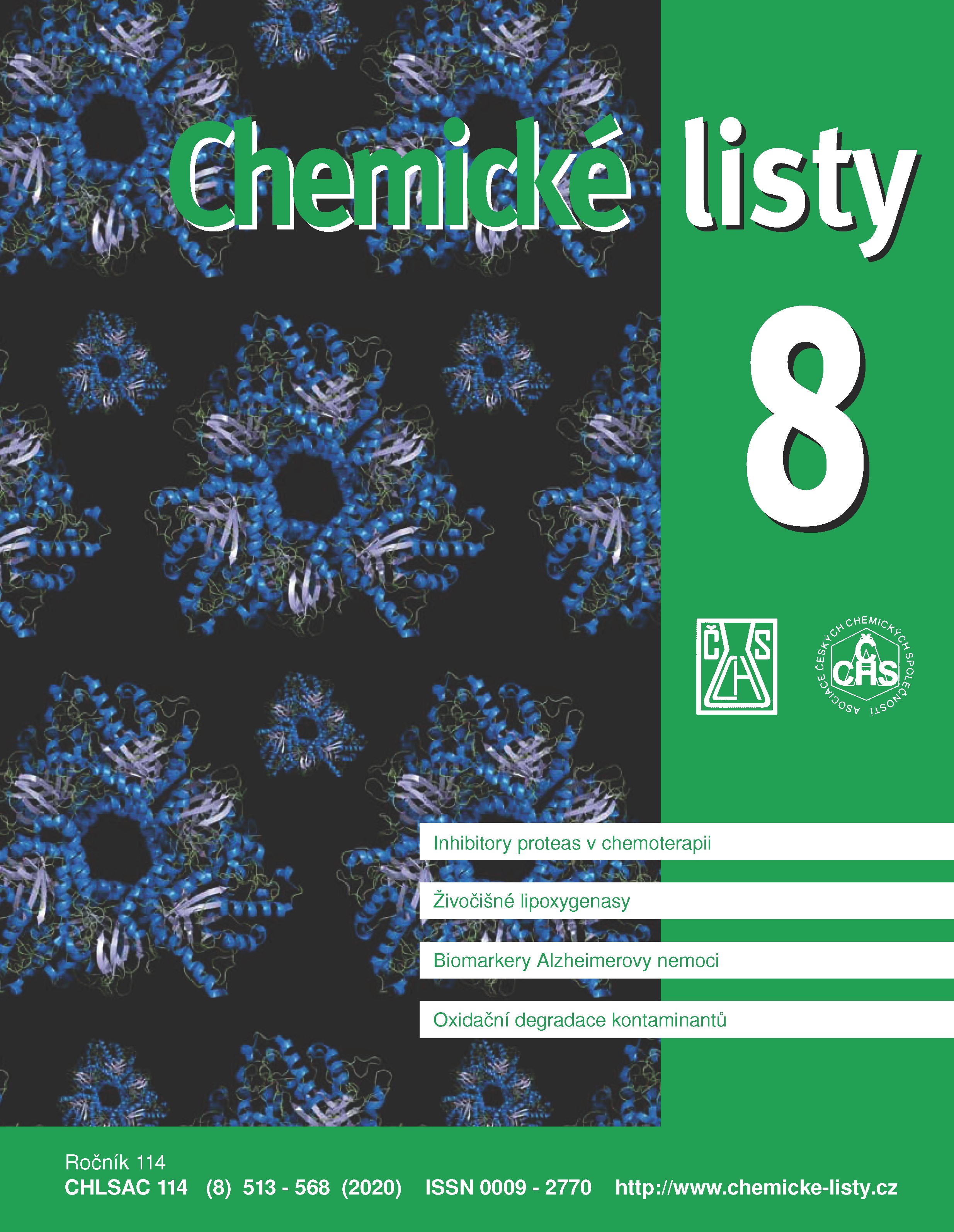Živočíšne lipoxygenázy – polyfenoly, ako potenciálne inhibítory lipoxygenáz
Klíčová slova:
živočíšne lipoxygenázy, polynenasýtené mastné kyseliny, inhibítory lipoxygenáz, rastlinné sekundárne metabolity, polyfenoly, biologická aktivitaAbstrakt
Lipoxygenases belong to the multigene family of dioxygenases containing non-heme iron in the active site of the enzyme. They catalyze the stereospecific insertion of molecular oxygen into the cis,cis-1,4-pentadiene configuration of polyunsaturated fatty acids, thus forming corresponding hydroperoxides which serve as starting compounds for the synthesis of leukotrienes and lipoxins, i.e., mediators of allergic and inflammatory diseases. Based on their positional specificity, lipoxygenases are categorized as 5-LOX, 8-LOX, 12-LOX and 15-LOX isoenzymes, which differ not only in the position of oxidation but also in the chirality, essential for their biological activity. Increased expression of genes for lipoxygenase in the pathogenesis of inflammatory, cardiovascular or cancer diseases, but also diabetes mellitus and other diseases, has prompted considerable research efforts toward finding new effective inhibitors applicable in the therapy. Furthermore, in addition to the searching for new selective inhibitors of LOX isoenzymes, the current attention is also focused on plant secondary metabolites, particularly from the group of polyphenols. For the application of medicinal plants containing polyphenols, the isolation and characterization of their biologically active compounds and study of the mechanism of their lipoxygenase inhibitory activity is a way to succeed. The use of LOX as a model enzyme in the search for effective inhibitors requires consideration of the functional multiplicity of the enzyme and the selection of inhibitors specific for LOX isoenzymes. The preparation of purified and recombinant forms and targeted mutations of LOX coding genes could be the way of obtaining potential therapeutically active agents.





